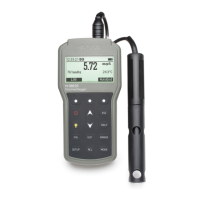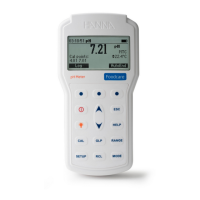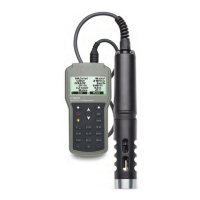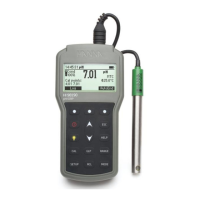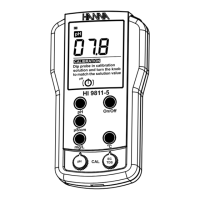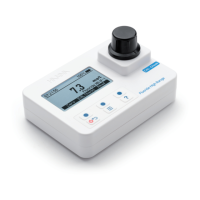87
The calibration solutions and displayed measurements are as ppm Chloride ions. Due to the space
restriction of the display the unit of measurement will be displayed as “ppmCl” (without charge).
The chloride sensor will last longer in colder clean waters than in severely contaminated water or warmer
waters. This is because the external surface of the sensor responsible for the chloride ion sensitivity
can react with water contaminants or be leached out of the sensor with continued exposure. As the
sensor ages there will be a decreased sensitivity until the sensor will no longer calibrate or operate
properly. The lifetime of the sensor depends greatly on deployment conditions.
Although HI7609829‑11 is selective toward chloride ions, it also responds to other ions.
The interfering ions sulfide, cyanide, and mercury ions must be absent.
The interfering ion to Cl¯ ratio must be less than the ratio indicated below:
Iodine: 1.0
Bromide: 3.5
Carbonate: 3.5
Hydroxide: 1.0
Thiosulfate: 0.01
APPENDIX C - ISE INFORMATION
HI7609829‑12: Nitrate ion selective electrode is a combination liquid membrane sensor used for the
detection of nitrate nitrogen in freshwater samples. The sensor utilizes a polymeric membrane made
with nitrate ionophore in a PVC head and a silver/silver chloride double junction gel filled reference
electrode. The outer body of the sensor is the thermoplastic PEI. This sensor is used in place of the
pH sensor in the probe.
The measurement of Nitrate‑Nitrogen, NO
3
¯‑N is a useful tool in the measurement of surface water
contaminants such as tracing the source of agricultural operations runoff or studying nutrient levels
in natural waters. HI7609829‑12 is an ion selective sensor that responds to the free nitrate ion.
Although all forms of nitrogen including nitrogen gas (N
2
) are interconvertible within the nitrogen cycle
as a function of oxidation state, the nitrate sensor only detects the ionized form.
HI7609829‑12 is specified for 0.62 to 200 ppm (mg/L) NO
3
¯‑N (equivalent to 2.74 ‑ 885.6 ppm
(mg/L) NO
3
¯). Based on the corresponding molecular weights of nitrogen and nitrate, the relationship
is: NO
3
¯‑N =(NO
3
¯)(14/62)=(NO
3
¯) x 0.2258.
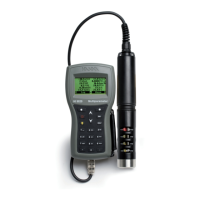
